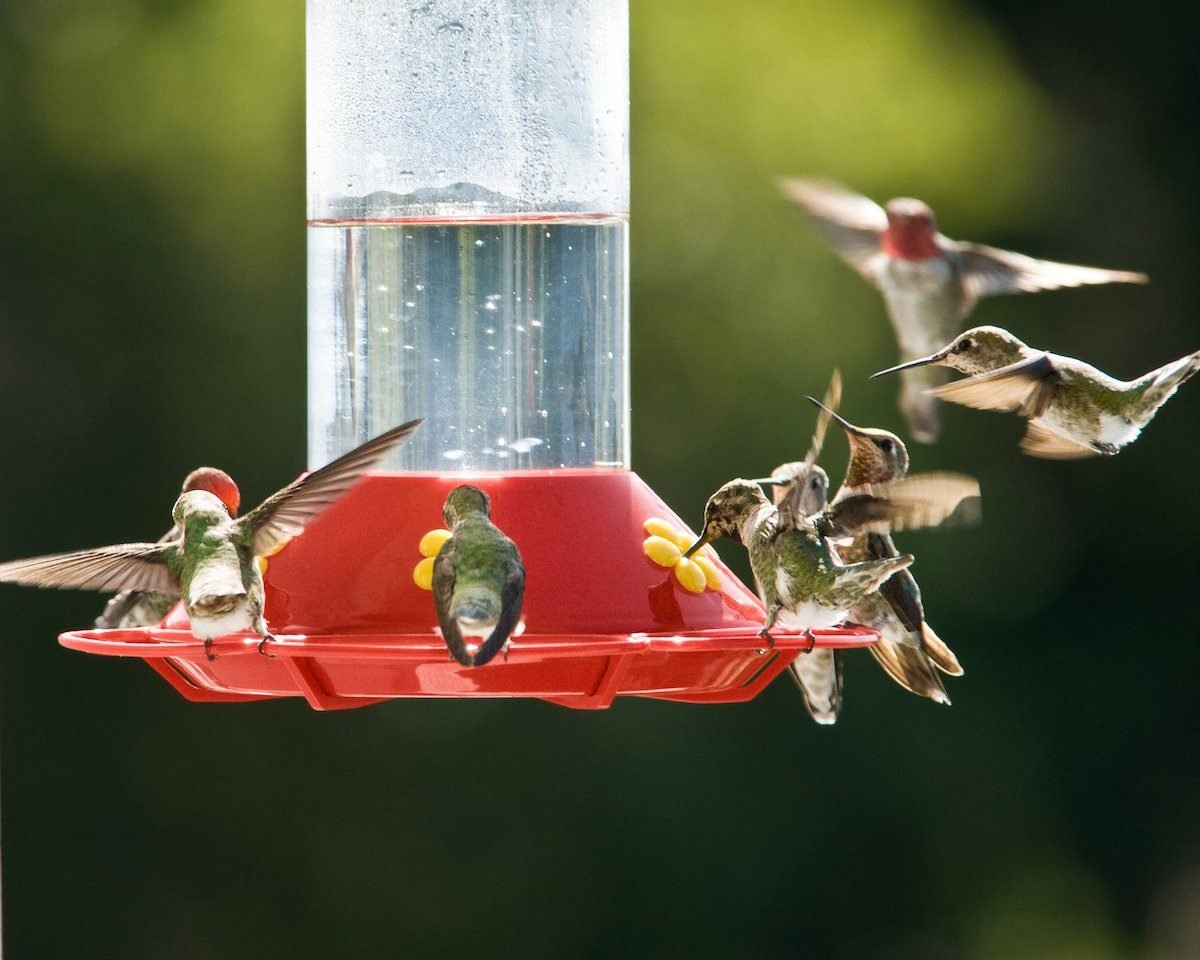To attract Mother Nature's version of the hovercraft and keep them coming back, avoid these common mistakes with hummingbird nectar and feeders.

Hummingbird Nectar Mistakes to Avoid

To enjoy watching hummingbirds, you’ll need a healthy feeding station where they can quickly fill up. Despite their small size, they eat a lot. These jewel-feathered whirling dervishes eat half their body weight in bugs and nectar each day, according to the National Audubon Society. That’s the equivalent of visiting more than 1,000 flowers.
A hummingbird feeder makes it much easier for them to get enough fuel. Here are eight common mistakes you can avoid when putting out hummingbird feeders.
On This Page
How to Make Hummingbird Nectar
The standard recipe for homemade hummingbird nectar is four parts water to one part sugar. So, depending on how big your feeder it, that could be two cups of water for every half cup of sugar or four cups of water to one cup of sugar. That’s it.
Tap water is generally fine to use. If your water source is high in minerals, put it in a glass measuring cup and microwave until it boils. Hot water dissolves the sugar more quickly, and leftover nectar stores better (up to a week) in the refrigerator.
Using the Wrong Homemade Hummingbird Nectar Ratio
Make sure you double check your math when prepping the hummingbird nectar, especially if you’re prepping a larger batch for your feeder. It may be easiest to start with the sugar amount and then multiply by four rather that starting with the water amount and then dividing.
Trying Hummingbird Nectar Recipes With Honey or Other Sugars
Honey and maple syrup have soared in popularity with “no sugar added” becoming a frequent selling point for cereals and sweets. With hummingbirds, though, the National Audubon Society advises sticking with refined sugar. Honey, when diluted with water, can cause fungus growth. Organic, natural and raw sugars might have levels of iron that could harm the birds. Say “no” to molasses, brown sugar or sugar substitutes as well.
Adding Red Food Dye to Hummingbird Nectar
While the color red does draw hummingbirds, most feeders already have red or yellow on them. That’s enough to catch hummingbirds’ attention without potentially harmful dyes. If you want to draw more attention to your feeder, hang it near a hanging basket of hummingbird-friendly flowers, such as petunias.
Filling Hummingbird Feeders Only Once a Week
Plan to change out the nectar every three to four days. You may need to refill it daily in the peak heat of summer when birds need more hydration, and near the end of summer when hummingbirds are bulking up for migration. If you notice nectar turning cloudy, replace it immediately.
Topping Off the Hummingbird Nectar
It may be tempting to top off the nectar already in your feeder, but it’s important to empty it and clean it with mild detergent each time, according to the International Hummingbird Society. Refill with fresh sugar water.
Not Sterilizing the Hummingbird Feeder
At least once a month you should soak feeders in a bleach solution (one tbsp bleach per cup of water) before rinsing it thoroughly. Sterilizing the feeder helps avoid fermentation, mold or fungus that can harm hummingbirds. Some glass hummingbird feeders are dishwasher safe. It’s always best to check the recommendations of your feeder’s manufacturer.
Low Hummingbird Feeder Placement
It may be tempting to use a shepherd’s hook to integrate your feeder among garden flowers, or to keep it at eye level near outdoor seating. Don’t. Proper hummingbird feeder placement should be at least four feet off the ground and away from tree trunks, retaining walls or steps where roaming cats and other predators can lurk and capture hummingbirds.
Sparking a Feeder War
A super-sized feeder with several nectar ports might attract more hummingbirds, especially more mild-mannered females. Unfortunately, males, in particular, can be fiercely territorial. One alpha male hummingbird can claim a feeder and doggedly chase all others away. Consider more than one feeder and place them in different locations.




















